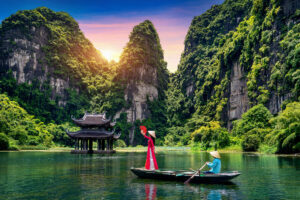16 Best & Unique Things to Do in Hakone, Japan (2024)
13 min readLooking for the best things to do in Hakone, Japan? I’ve got you covered! Read more below to discover Hakone’s top attractions and off-the-beaten-path gems. With natural hot springs, panoramic...
The post 16 Best & Unique Things to Do in Hakone, Japan appeared first on Bucketlist Bri.
Looking for the best things to do in Hakone, Japan? I’ve got you covered! Read more below to discover Hakone’s top attractions and off-the-beaten-path gems.
With natural hot springs, panoramic views of Mount Fuji, and rich history and culture, it’s no wonder Hakone has become one of Japan’s premier travel hotspots.
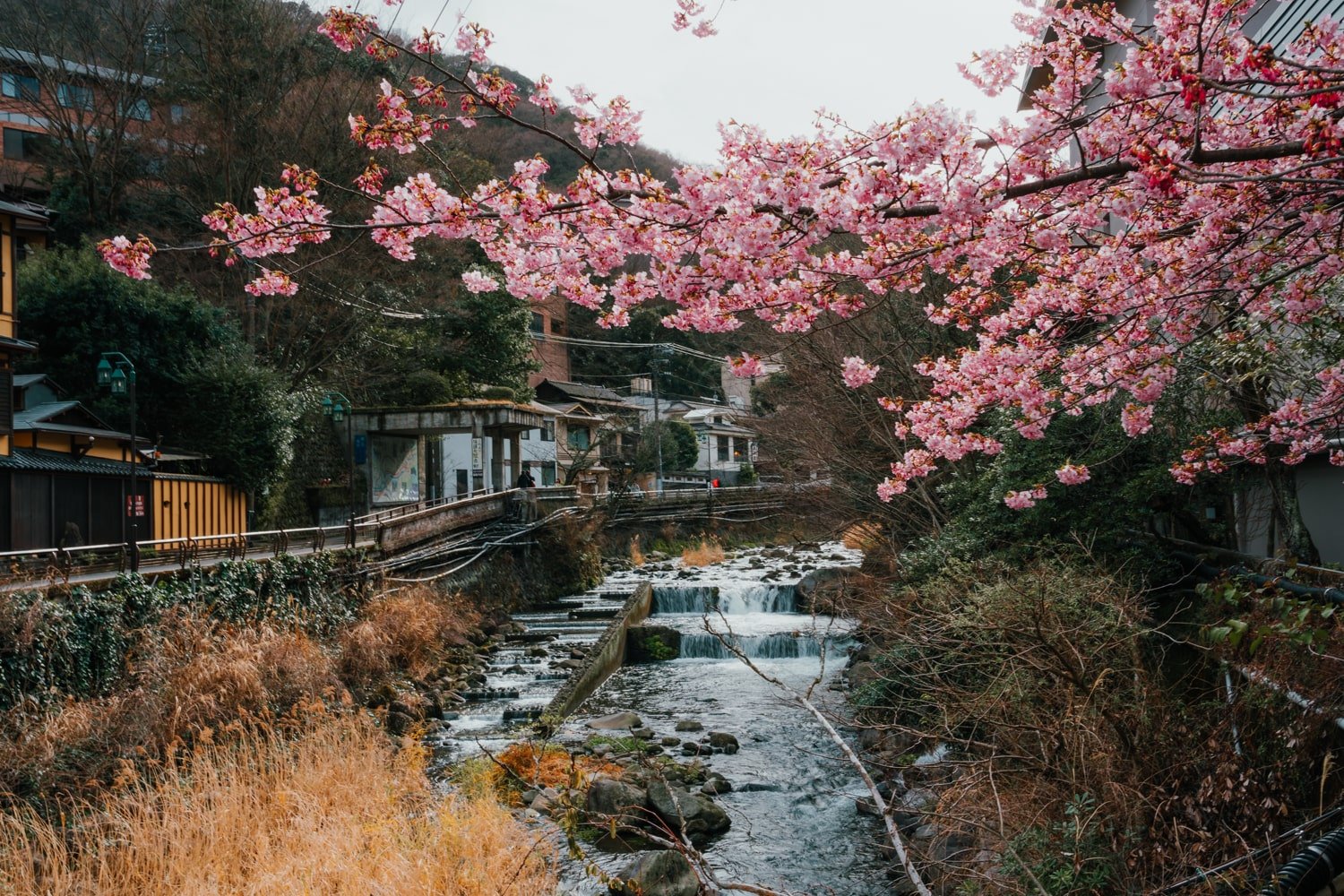
Disclaimer: This post contains affiliate links that may earn me a small commission should you decide to click through and make a valid purchase (at no extra cost to you). Thanks so much for your support!
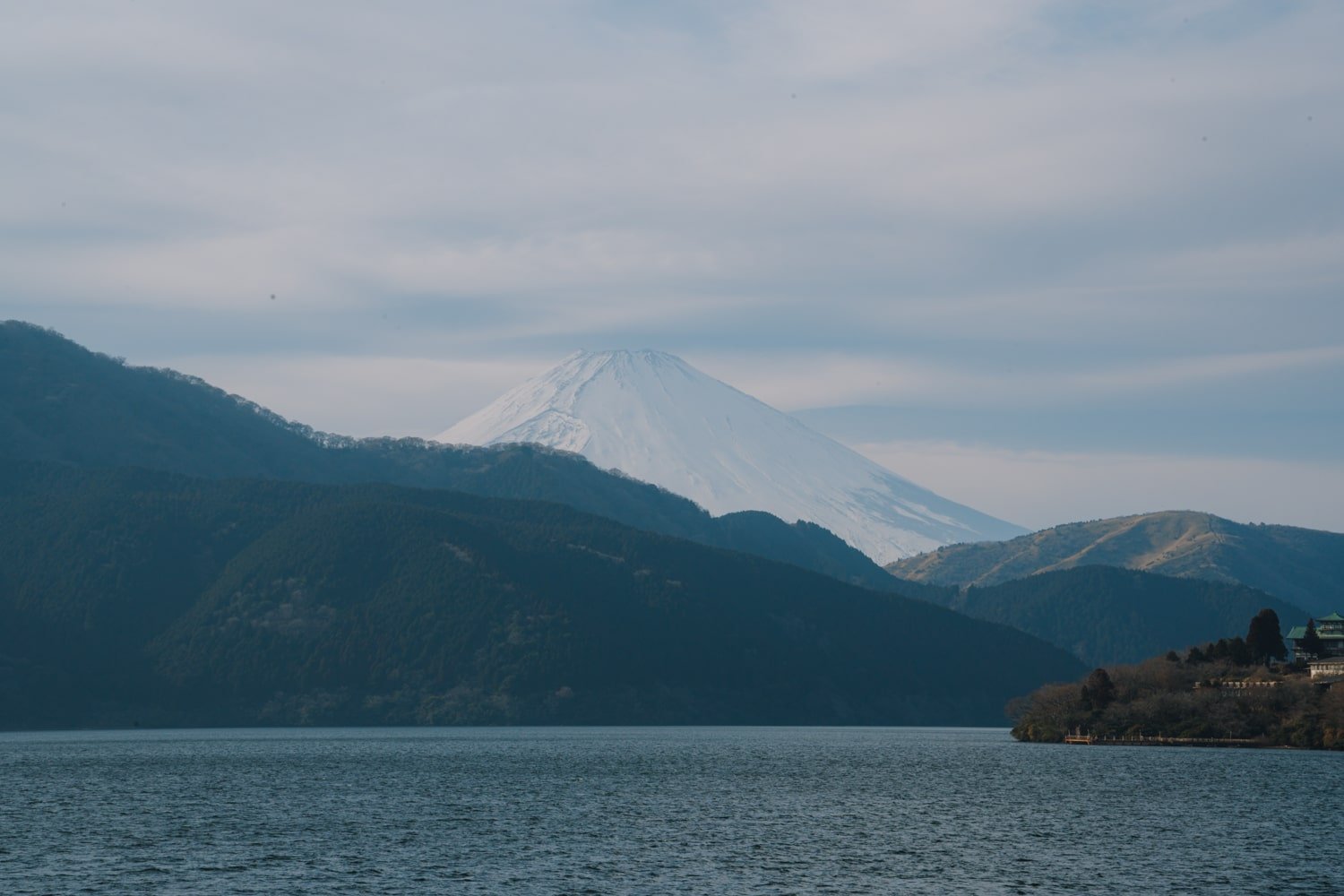
Located just an express, 80-minute train ride from Tokyo in the neighboring Kanagawa prefecture, Hakone (a part of Fuji-Hakone-Izu National Park) is a popular weekend getaway destination for Tokyoites and foreigners.
But whether you’re visiting Hakone for the first time or not, this list of things to do will have you savoring all that Hakone has to offer both on and off the tourist trail.
After spending several days in Hakone myself wandering between Hakone’s “must-sees” and the seemingly-overlooked back alley nooks, I put together this guide to share with you the best activities and places to visit!
Read more below to learn how to experience Hakone on and off the beaten path at your own pace.
show
16 Amazing Things to Do in Hakone (Bucket List!)
1. Relax in Hakone’s Famous Onsens (Hot Springs)
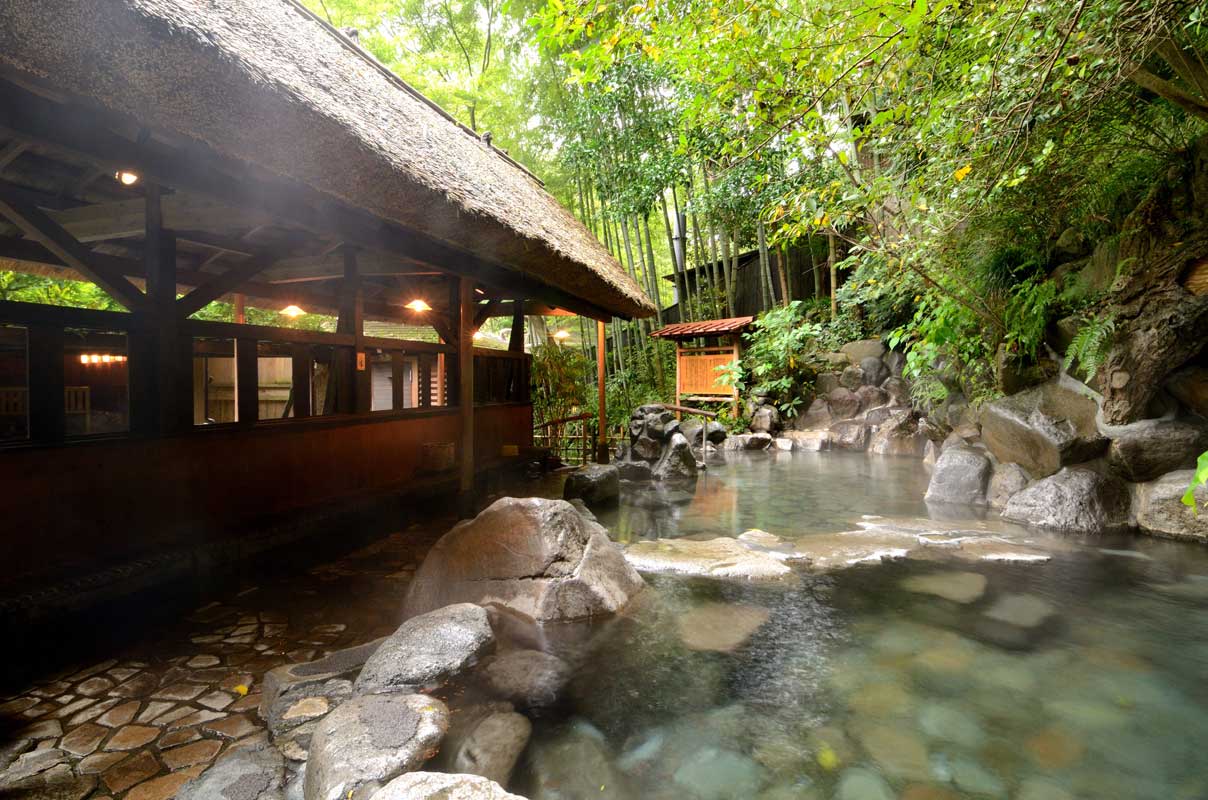
Hakone’s claim to fame and the reason most people visit… onsens!!
That’s right! Arguably, the best thing to do in Hakone is to enjoy one of its glorious onsens!
Onsen culture in Japan is very experiential and a must-do when traveling there.
And seeing as Hakone is one of Japan’s most well-known onsen towns, you must get over any naked shyness and give it a go!
While many of Hakone’s top-tier onsens are owned by the ryokan inns and hotels, there are several public onsens where you can go even as a non-guest or daytripper.
I recommend the Tenzan Onsen (¥1350-1400) as they are tattoo-friendly, and the hot springs vary in temperature and are framed in a pretty natural setting.
Other popular onsens in Hakone include:
- Hakone Yuryo — The most popular choice for tourists but it is not tattoo-friendly! There is a free shuttle you can take from Hakone-Yumoto station to get there.
- ¥1600 (weekdays), ¥1900 (weekends)
- Hakone no Yu — Also popular, also not tattoo-friendly
- ¥1250 (or ¥700 if you’re a guest at and purchase from Guesthouse Azito)
- Natural Onsen Izumi — I think it is tattoo-friendly, but I’m not sure
- Yu no Sato Okada
- Komorebi no Yado Furusato — Located at a small, family-run Japanese inn
- Kappa Tengoku — A no-frills onsen located behind the Hakone-Yumoto Station
Onsens in Hakone are a must-experience year-round.
But if you visit Hakone in winter, then onsens are particularly satisfying when you’re chilled to the bone and need a hot soak.
Just thinking about it gives me goosebumps!!
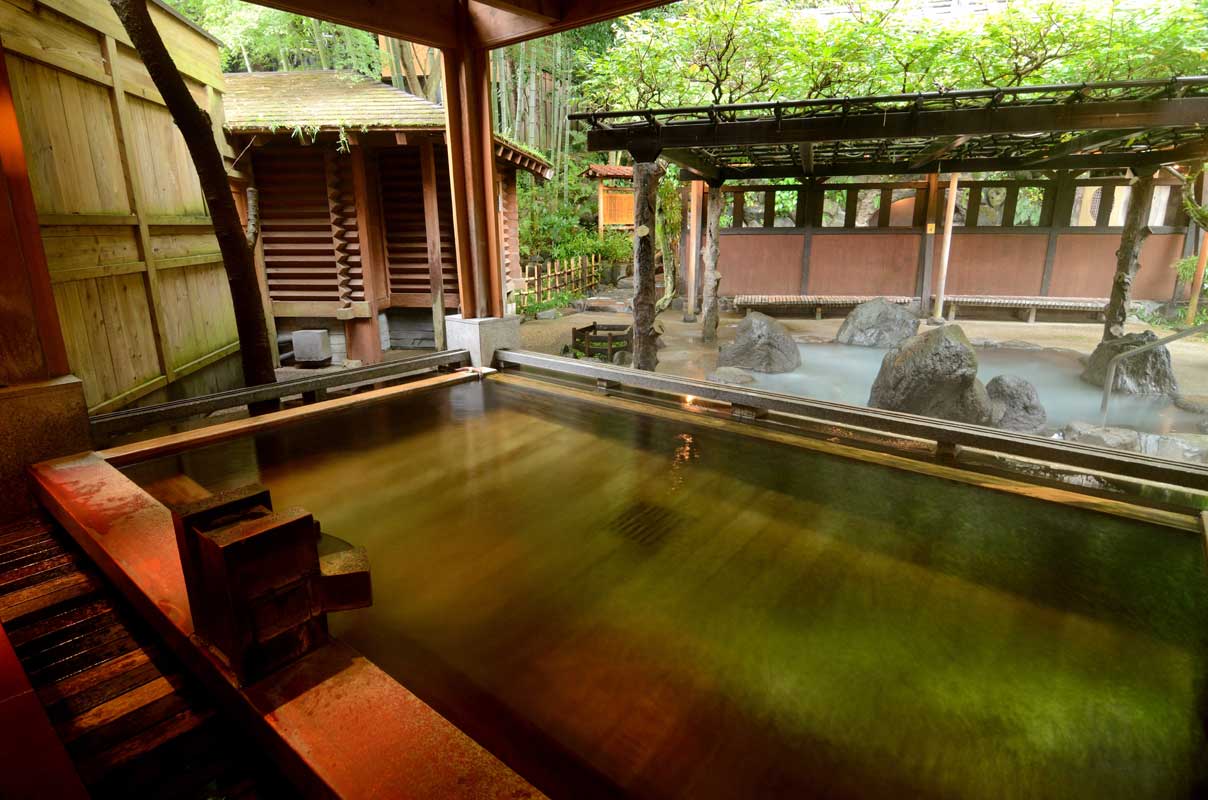
Finally, here’s a glance at Japan’s onsen etiquette to follow if it’s your first time:
- Bathe naked!
- Wash thoroughly with soap and water before entering the hot springs.
- Keep your hair tied up out of the water.
- Take a face towel in the onsen (but keep it on your head and always out of the water).
- You can rent face/bath towels at locations for around ¥200-350.
- Bring cash for ticket machines (plus, some onsens accept cash only).
- Shampoo, conditioner, and body soap are usually provided.
- No photographs/cameras inside the changing room or onsen area.
- Lockers in the changing room usually cost ¥100—you can wear the key around your wrist in the bath.
- Hair dryers are provided (I’ve seen them at every onsen and sento I’ve visited!).
2. Hike to Mount Kintoki Summit (1212m) — Hakone’s Highest Peak
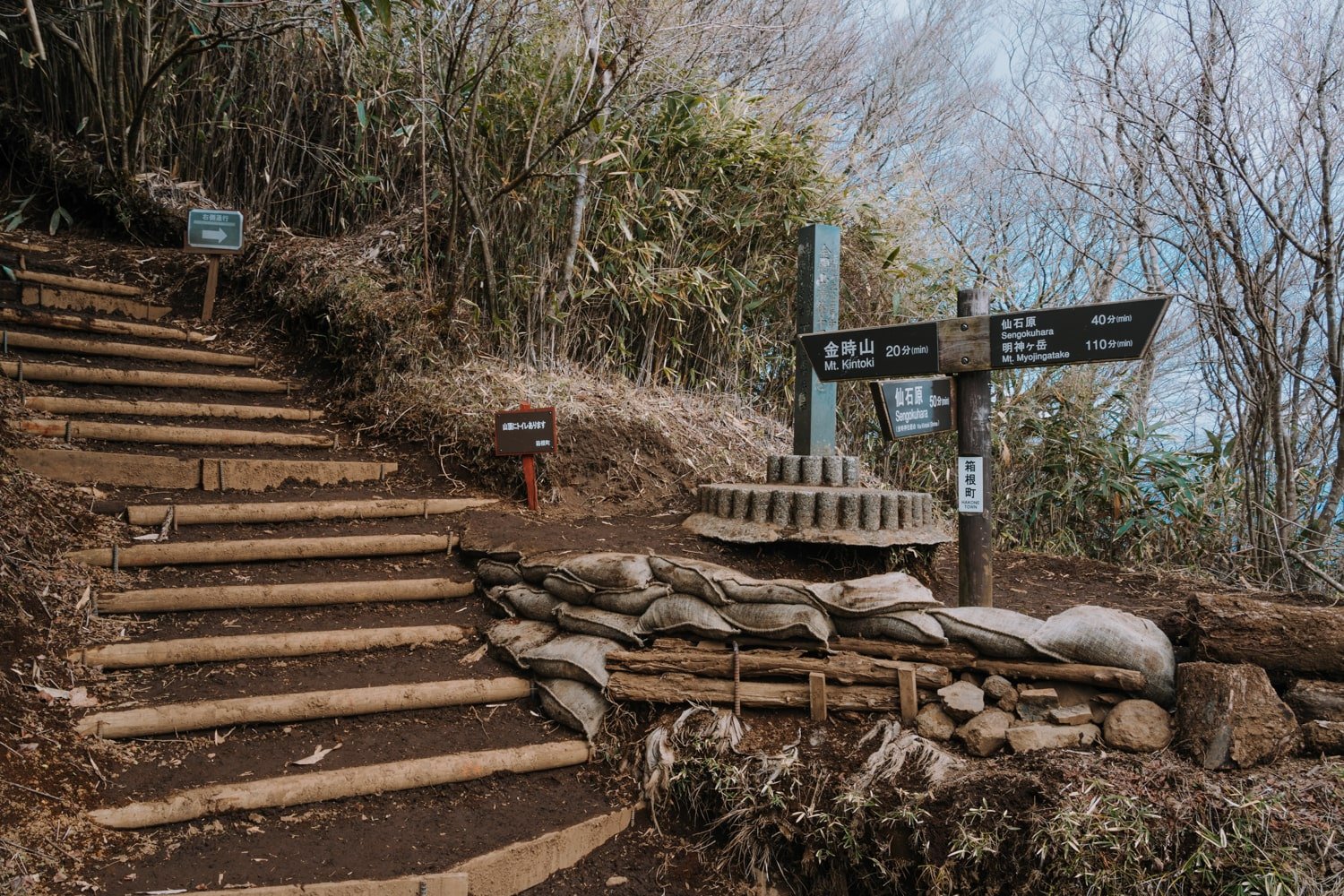
Mount Kintoki is one of the top hikes in Hakone, so if you’re eager to get outside and hit the trails, this is a great choice.
The summit of Mount Kintoki offers one of the best views of Mount Fuji, which you can get in Hakone.
The only catch? The hike is challenging, with a near-constant vertical climb to its summit at 1212m.
Even though the weather turned sour right when I reached the top of the summit, hiking this trail solo became one of my favorite activities in Hakone.
It was a beautiful, well-marked trail away from the crowds; I only saw about ten other hikers the entire way.
While there are several routes to the summit, I suggest starting at the Kintoki Shrine dedicated to a famous Japanese folklore warrior, Kintaro.
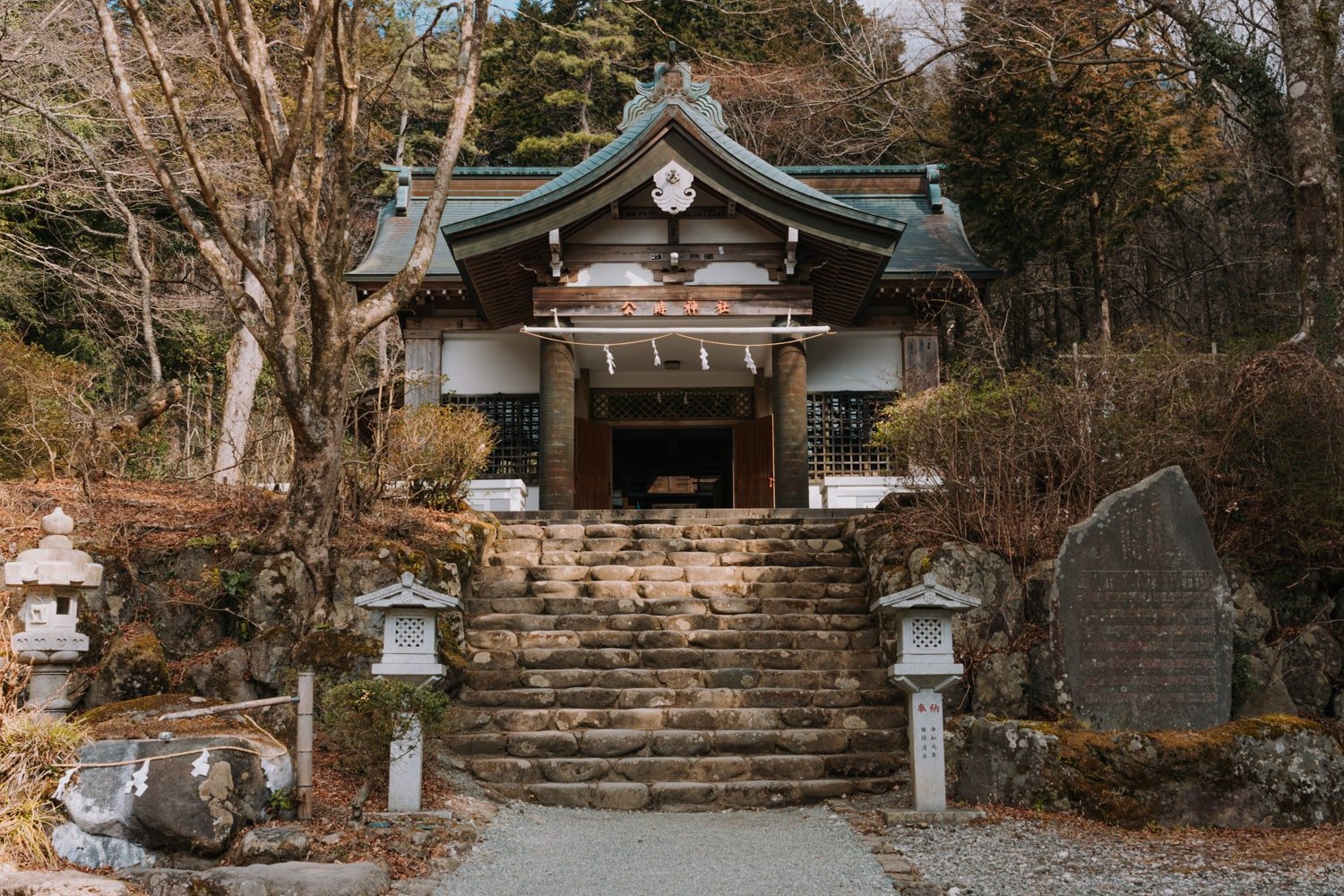
The one-way hike takes about 75 minutes, but fit hikers can do it in an hour. I clocked 40 minutes coming back down but set a fast pace as the weather was turning sour.
At the summit is a teahouse where you can have lunch, order tea (get the amazake), and use the restroom.
You can read my trail guide to Mount Kintoki for more details!
In short, if you enjoy outdoor activities, nature, and seeing Hakone off the beaten path, you must hike Mt Kintoki!
🌿 Please take care of Hakone’s nature and practice Leave No Trace on and off the trail! 🌿
3. Walk One of Japan’s Most Famous Roads (The Old Tokaido Highway)
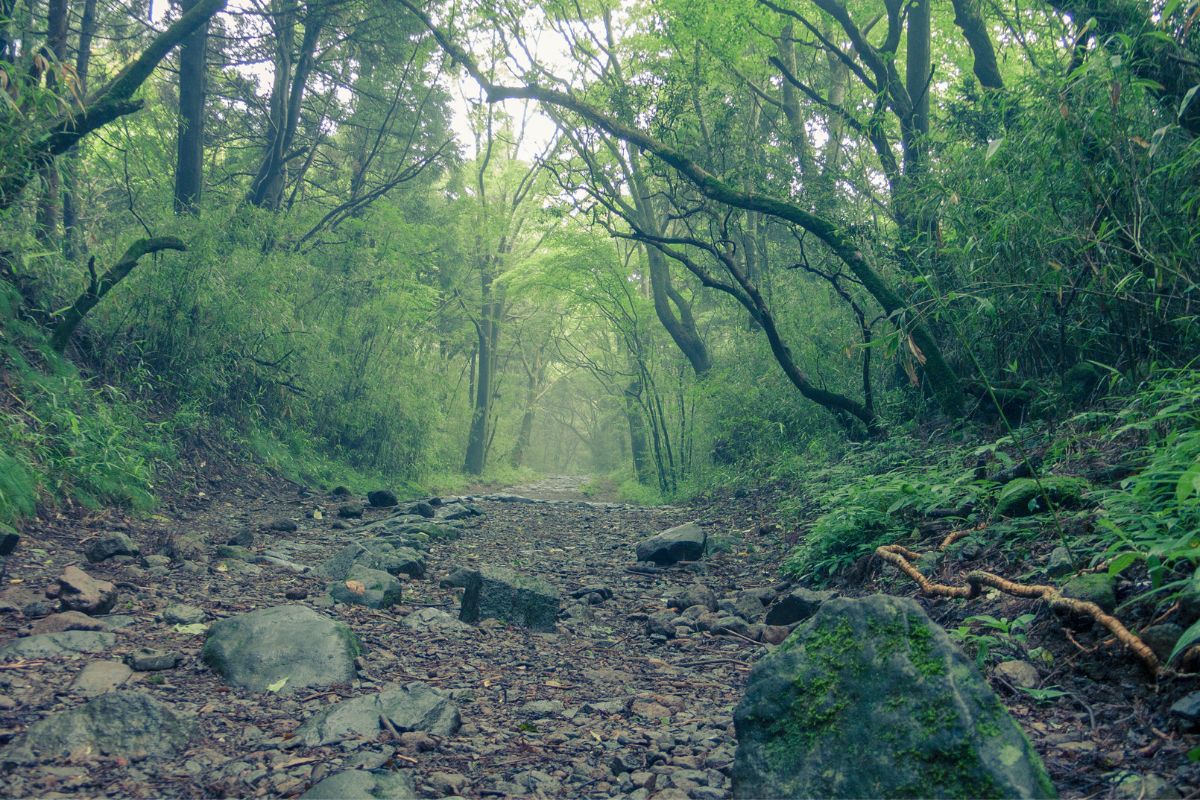
If you tire of Hakone’s crowded buses and trains, set out on your own two feet and walk the Old Tokaido Highway.
This beautiful and historic walking trail was once used during the Edo period to connect Kyoto with Tokyo (Edo).
While you can walk the entire length from Hakone-Yumoto to Motohakone-ko, the best-preserved section (and perhaps the most scenic) is from Hatajuku to the shores of Lake Ashinoko.
Along this preserved stone paved path is the “Cedar Avenue”—a mystic-feeling trail lined with ancient cedar trees.
The walk takes around 35 minutes, and the best part is you get to stop for morning or afternoon tea and treats at the Amazake Teahouse, which is the next thing you must do in Hakone!
4. Visit the 400-year-old Amasake Chaya Teahouse
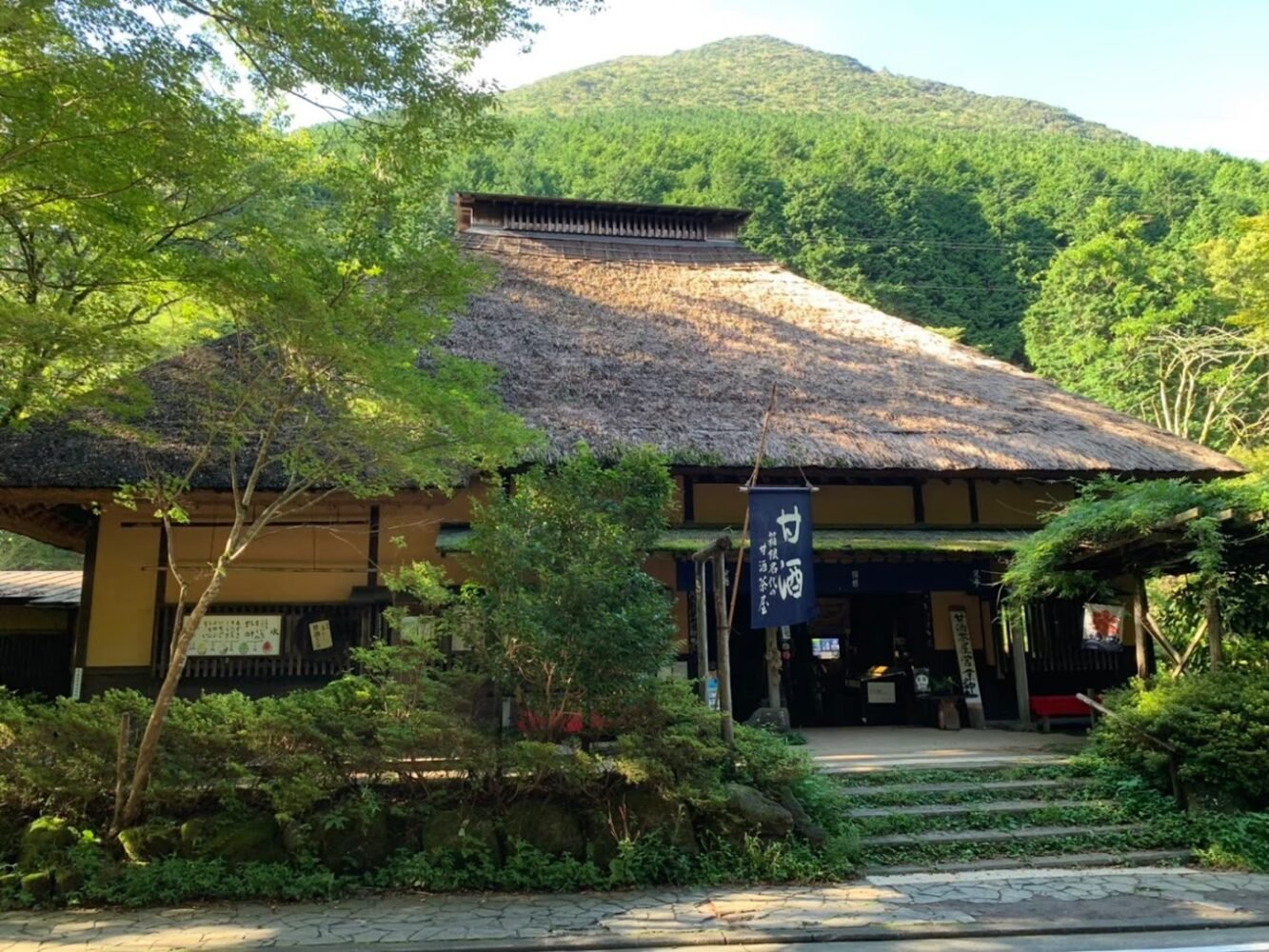
You must try amesake in Hakone, a Japanese sweet and non-alcoholic fermented rice drink.
You’ll find the 400-year-old Amazake-Chaya Teahouse in Hakone, where you can drink amesake and taste hot mochi.
The amazake brewed here is an original recipe dating back centuries to the Edo period when samurais and travelers would take the highway and stop through for a rest.
“The Amasake Chaya has been serving the same menu, in the same location, in what is essentially the same building for hundreds of years. It is now run by the 13th generation of the same family. You can enjoy the same mochi and sweet amazake that was served to other travelers centuries ago.”
Explore Hakone Blog | Source
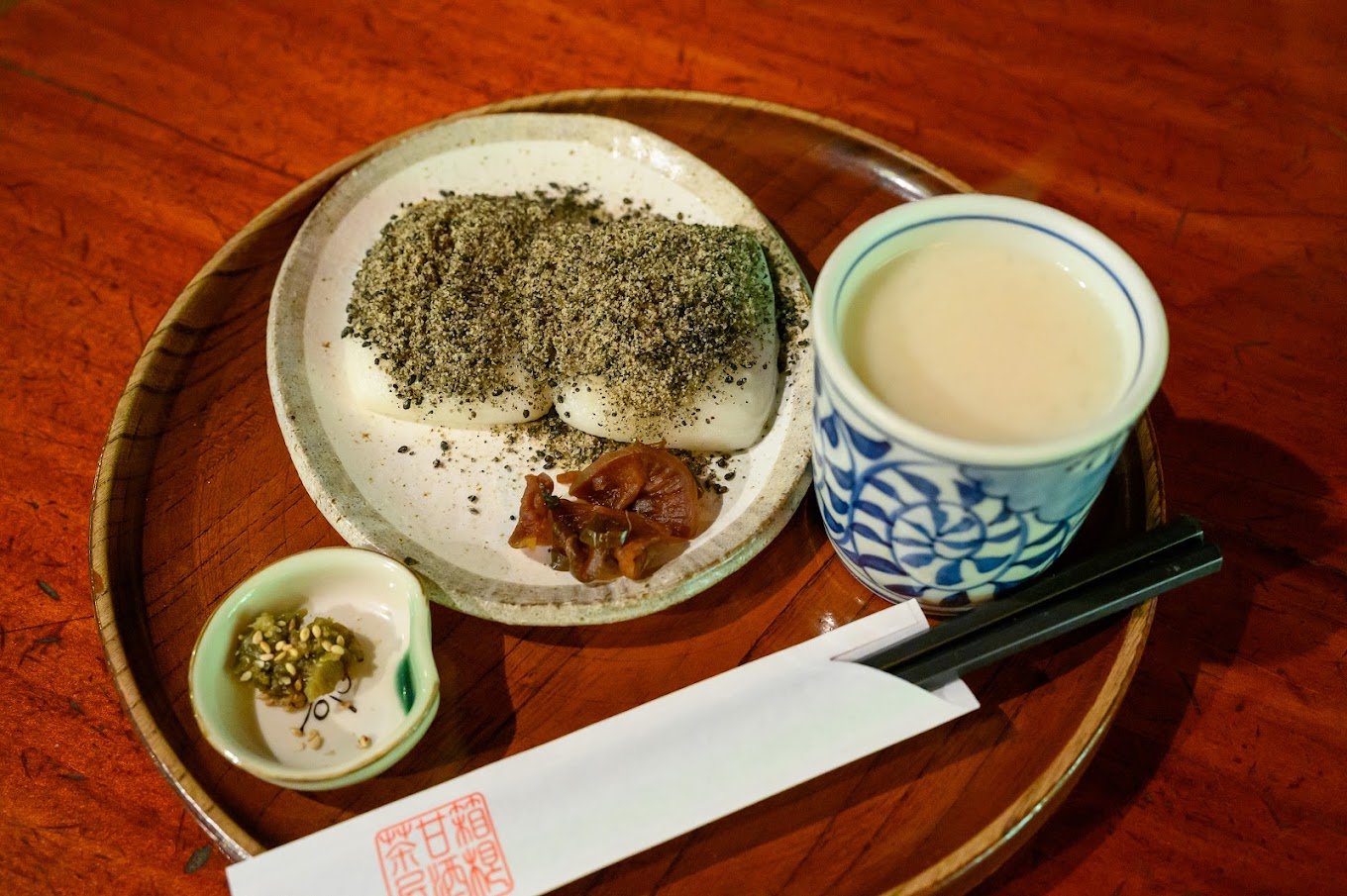
If you do the Mt Kintoki hike, you can also try amazake inside the summit teahouse there, even though it’s not the same experience as the Amazake-Chaya teahouse offers. The hot sweetness of the drink warmed up my soul and prepared me for the hike down!
Amesake is the perfect beverage to enjoy year-round in Hakone, especially if you visit Hakone in winter.
5. Visit Hakone’s Mesmerizing Museums
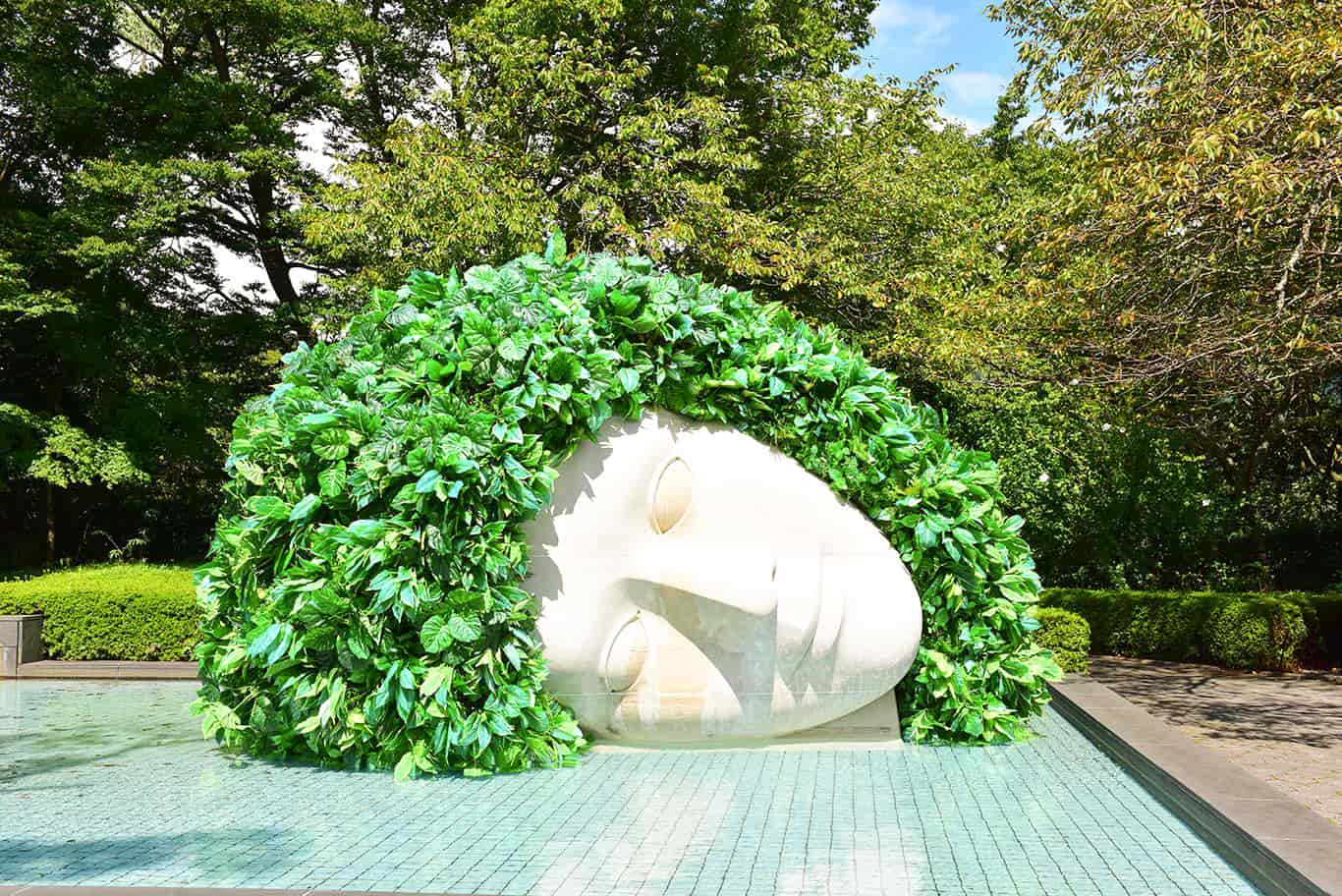
Hakone has multiple museums worth visiting if you get caught in the rain or snow.
Most notable are:
- Hakone Venetian Glass Museum
- Pola Art Museum
- Hakone Open-Air Museum (which kinda requires good weather unless you pack an umbrella and a warm coat)
- Okada Museum of Art
- Narakuwa Art Museum
The museums are spread around Hakone, but several are concentrated in the Gora area. You must take a bus or train to travel between them all, so choose wisely!
6. Write a Wish at the Hakone (Kuzuryu) Shrine
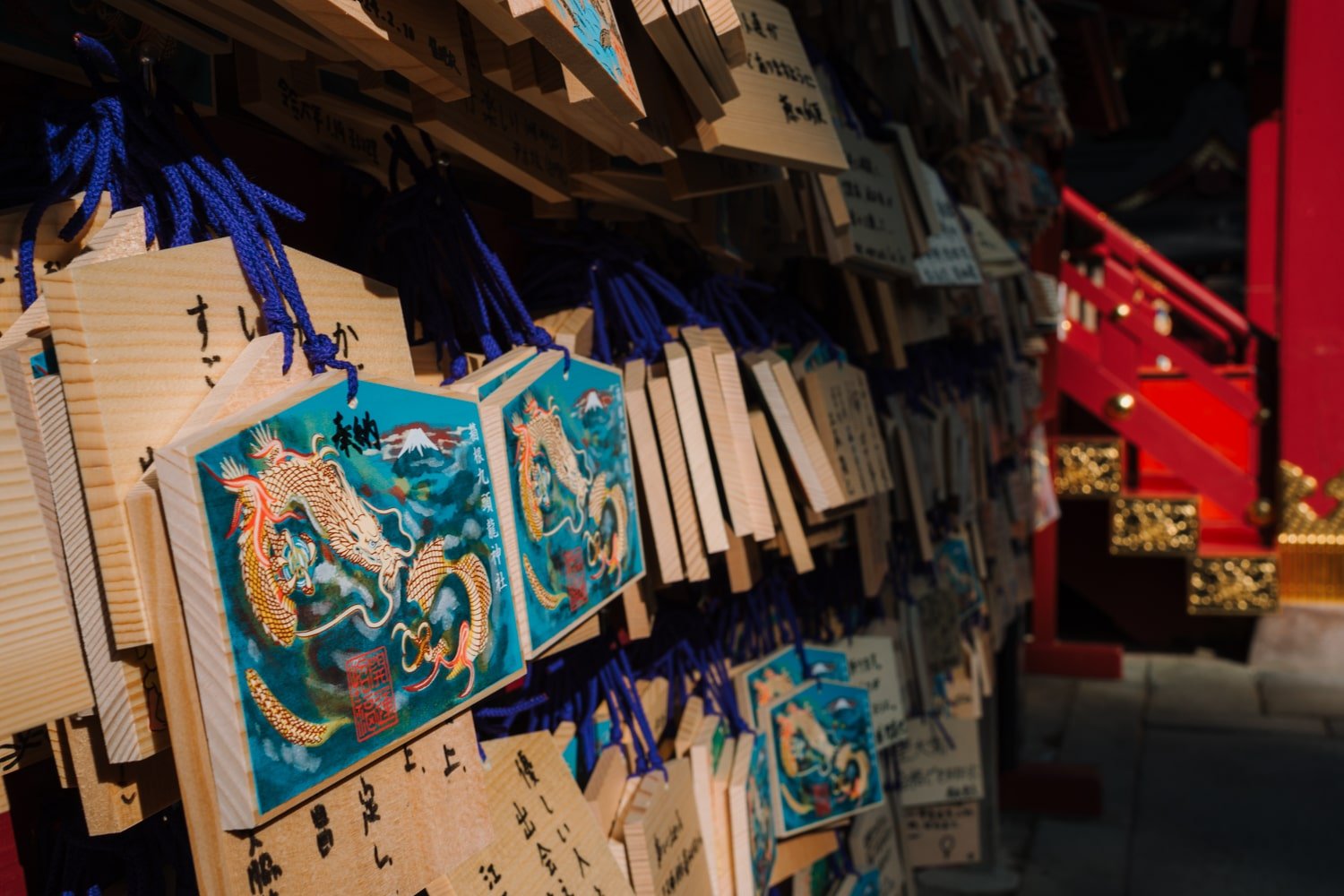
One of the top places to visit in Hakone is the mystical Hakone Shrine (Kuzuryu Shrine).
The Hakone Shrine is a classic Japanese Shinto shrine dedicated to Kuzuryu, meaning “Nine-Headed Dragon.” 🐉
It is mostly popular because of its red Torii gate, which rises out of the water on the shores of Lake Ashi and creates an aesthetic “Instagram-worthy” shot.
However, when you visit, don’t skip exploring the shrine at the top (start top-down).
Besides the photo op, the shrine is worth visiting, and I suggest you take extra time to soak in the eerie atmosphere.
Kuzuryu Shrine’s history is long and varied, dating back more than 1000 years, but in short, it tells of a monk who came to pacify Kuzuryu by chaining him to the rocks under Lake Ashinoko.
Later, the shrine grounds became a refugee for Minamoto Yoritomo (who established the Kamakura Shogunate ((1185 to 1333)), and thus became a sacred site for samurais and an important historical marker in Japan’s history.
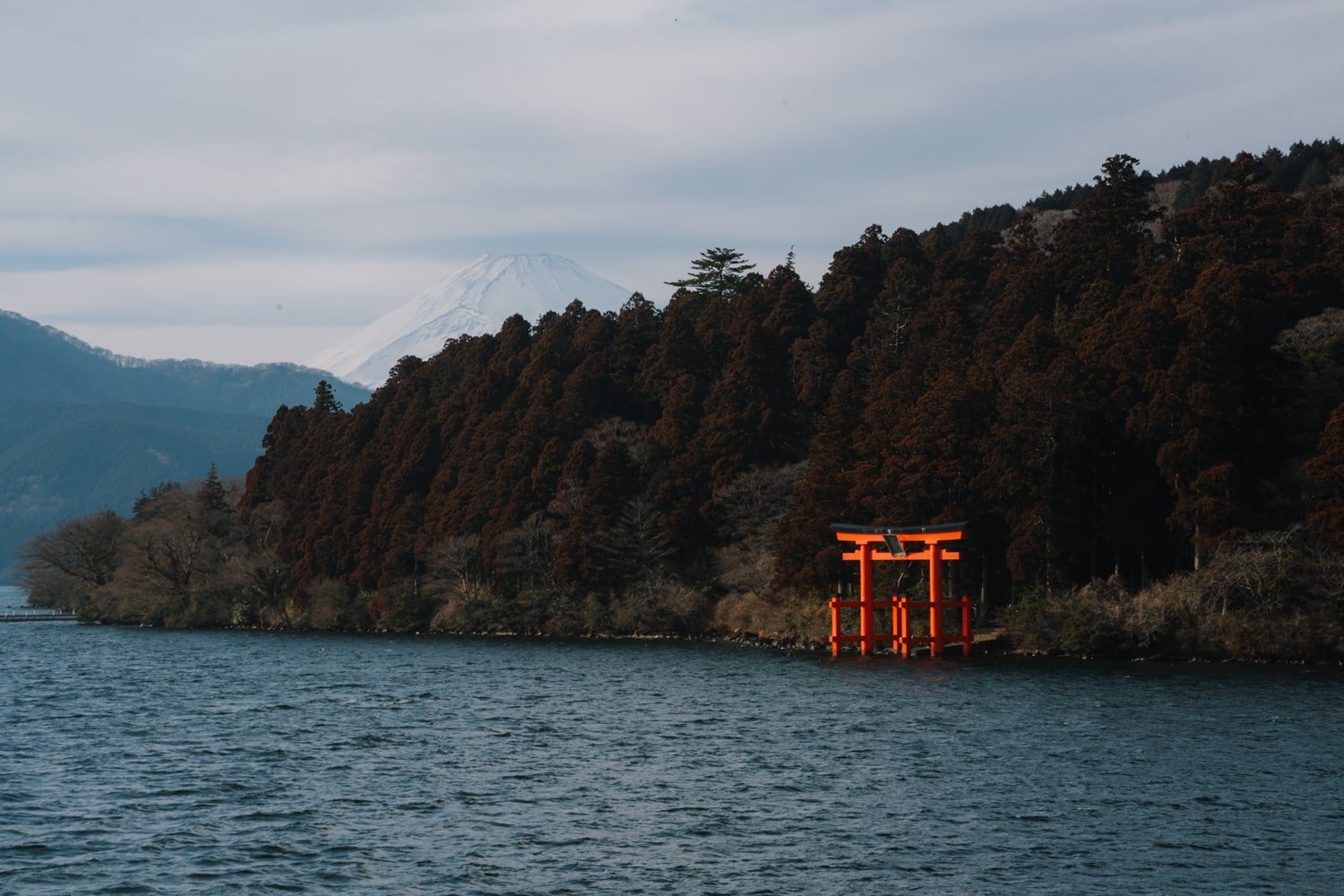
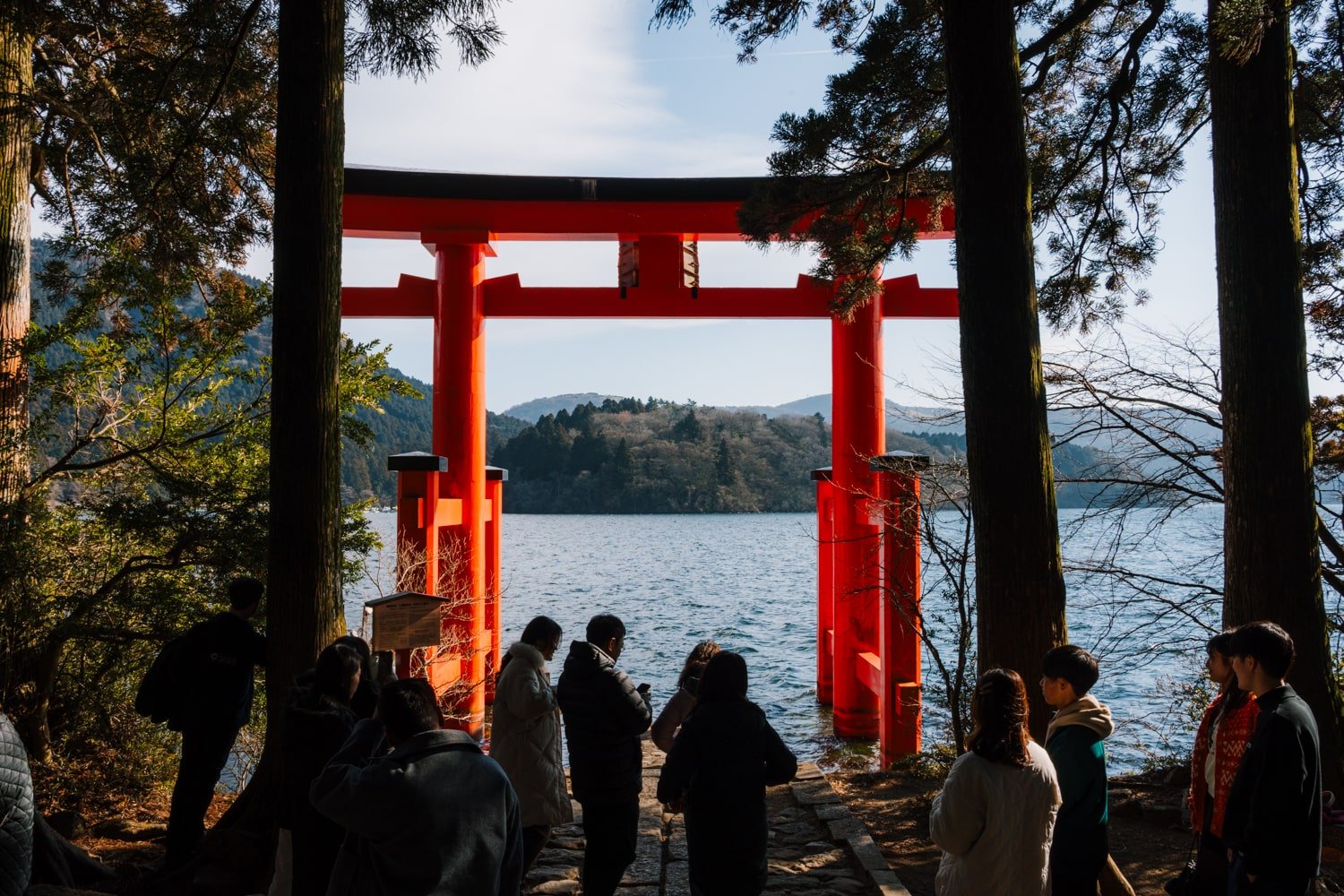
I have visited several Shinto shrines in Japan now, and this one is particularly mystical and has a special energy.
I purchased a beautiful dragon wooden plaque to write my wishes and tie it to the shrine.
The Kuzuryu dragon is still celebrated today, so if you visit Hakone from late January to early February, you might see fireworks for the Japanese Setsubun celebrations (on February 2nd, 3rd, or 4th).
7. Try Hakone’s Famous Yuba “Tofu Skin” Soup
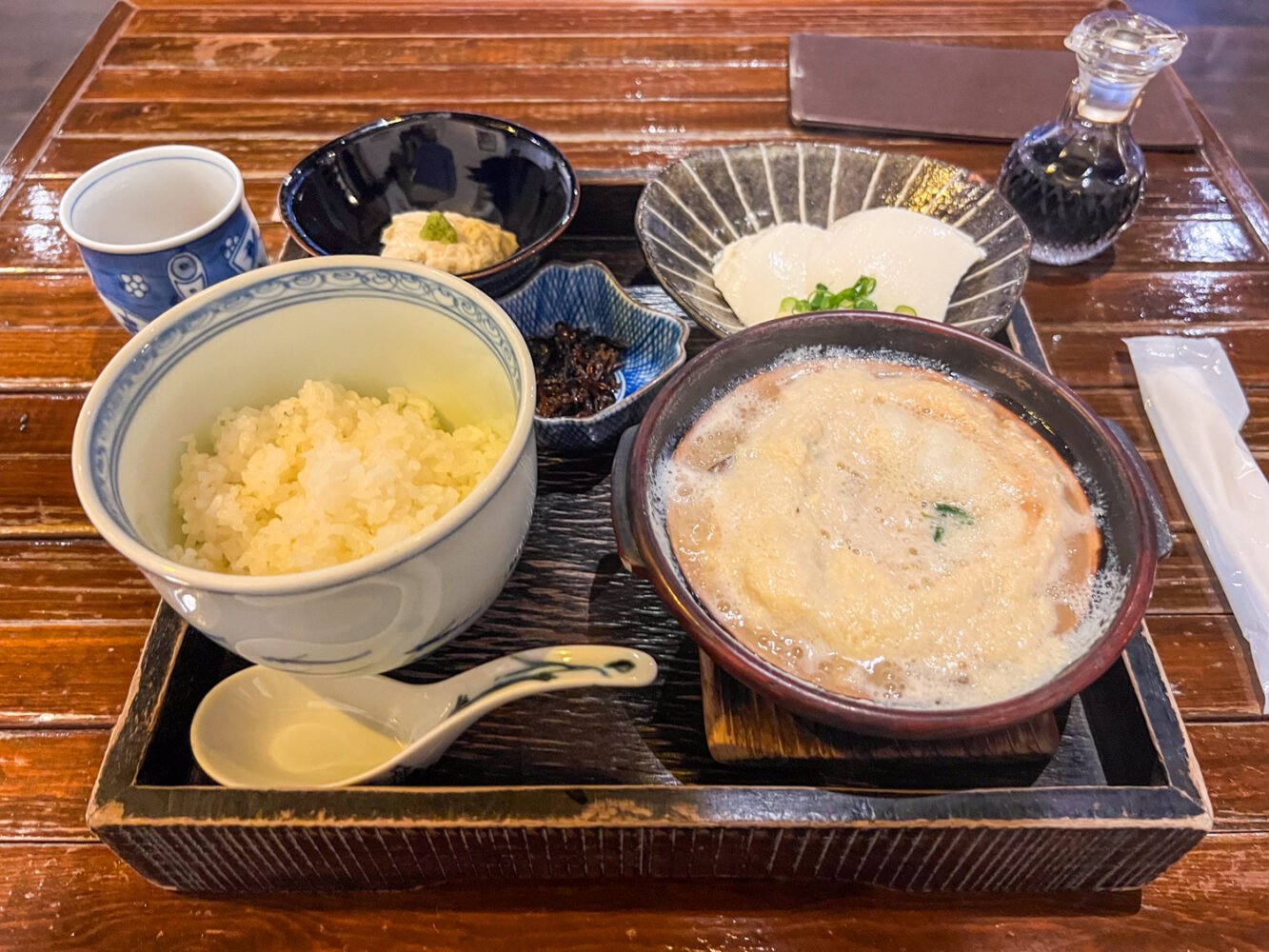
Another top-notch eatery in Hakone-Yumoto is none other than Yubadon Naokichi.
Yuba is a Japanese delicacy that you can try right here in Hakone! Yuba refers to the “skin” that forms on top of soy milk when boiled. It is also called tofu skin or beancurd skin.
Not only does this restaurant serve its signature Yuba soup made with Mt Hakone water, but it also serves other tofu delicacies.
The soup—and tofu side dishes—are a welcome treat that both warms you up on a cold day and takes you on a gourmet tongue-dive into Japanese cuisine.
I ordered the “soymilk skin omelet combo” (¥1,800), which came with the skin omelet fish-based soup, a side of cold tofu with green onion and ginger, soymilk skin as “sashimi” rice, and hot tea.
8. Tour the Historic Hakone Checkpoint
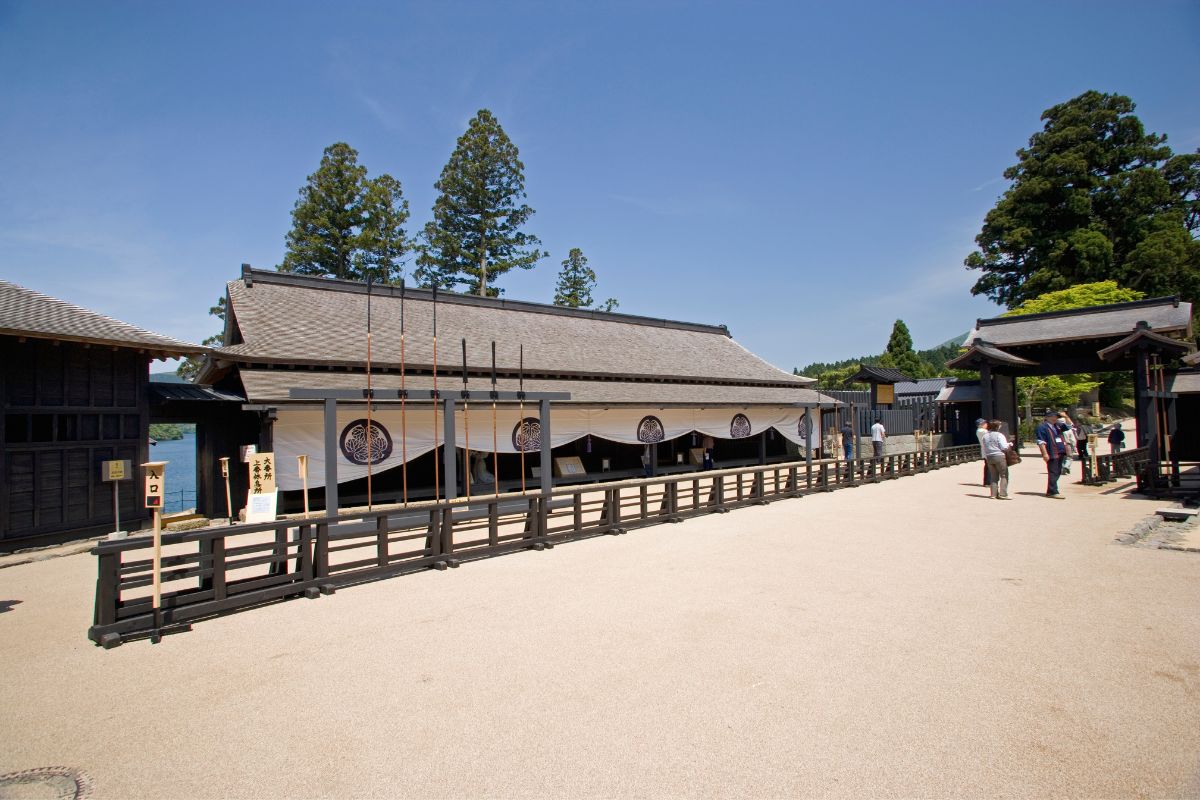
While down in Motohakone-ko, don’t miss out on the Hakone Checkpoint. Especially if you’re a history lover!
This checkpoint is one of the best-preserved Edo military checkpoints in Japan.
It’s the only checkpoint from this period in Japan that has been restored to its original state.
“Hakone Sekisho, an important site for the history of transport and communication during the Edo period, has been restored after 140 years.”
Hakone Sekisho Returns to life, source
If you want to take a walk in Japan’s past (literally), then this is an activity you can only find in Hakone—so don’t miss out!
Take Line “H” from Hakone-Yumoto and get off at the Hakonesekishoato bus stop to get there.
As for the museum’s entrance fee, it costs around 500 JPY and is well worth it!
9. Eat Hakone’s Food “Specialties”
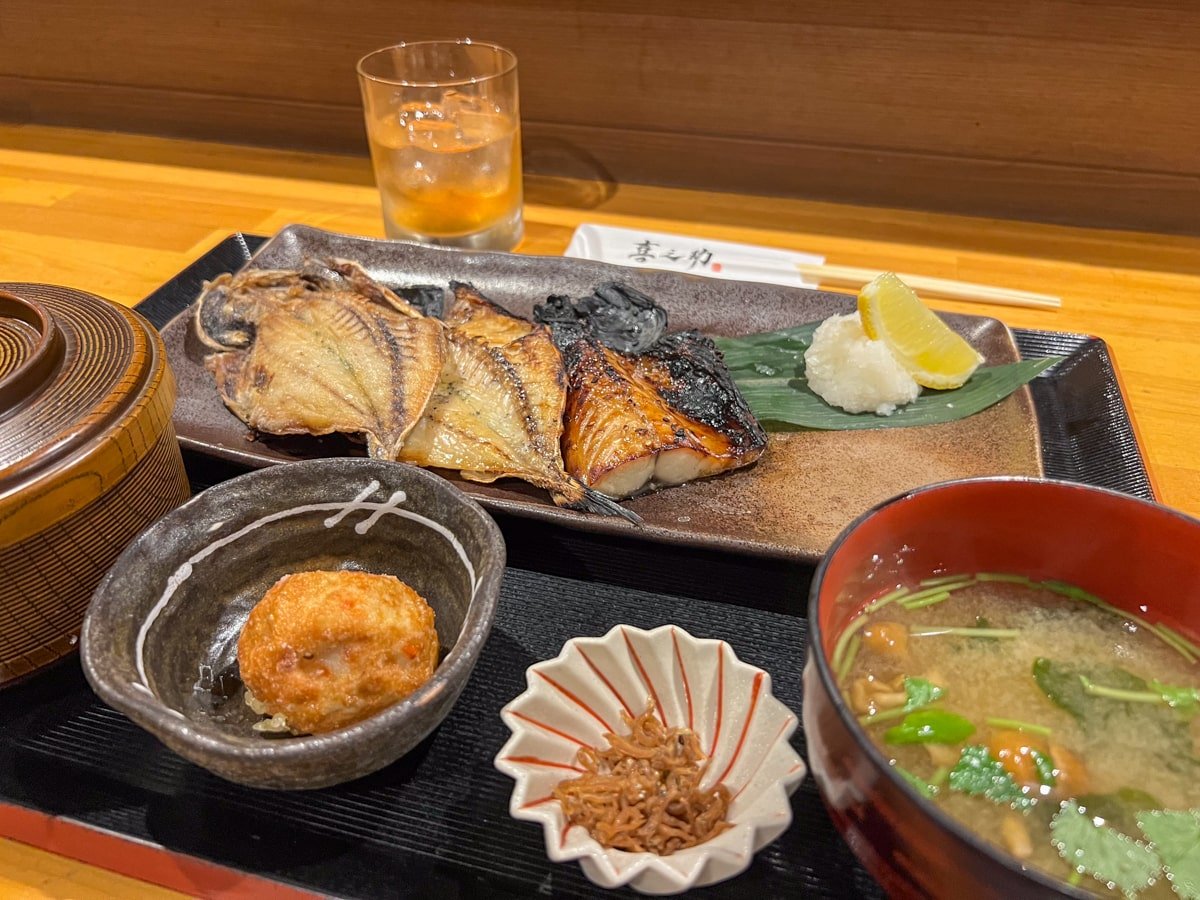
Hakone is famous for its onsens, but don’t overlook the food!!
When in Hakone, try the Owakudani black egg, the Yoba-don tofu skin, the grilled fish, hot mochi, and more (list below).
While scouting out the best places to eat, I found this gourmet gelato shop called Hakone Dolce studio STELLA tucked away on a side street in Hakone-Yumoto.
The gourmet ice cream/gelato here includes flavors not often found elsewhere. I had the Japanese kumquat and caramel!
Other exciting flavors include Quattro Fromaggi, Pistachio, Lemon & Cream Cheese, and the one I nearly chose—Oriental Dry Fruit mixing flavors such as Scotch whiskey, black tea, and Ceylan cinnamon!
Hakone treats to try:
- Pork skewers and puddings at Jyokamachi
- Amazake and hot mochi
- Fish cake sticks at Kamaboko Yokocho Kagosei
- Cheesecake and buttered toast at Cafe Timuny
- Onsen “manju”
- Soba and yuba (tofu skin)
- Owakudani’s black egg, of course!
10. Ride the Hakone Ropeway Over Volcanic Sulfur Fields
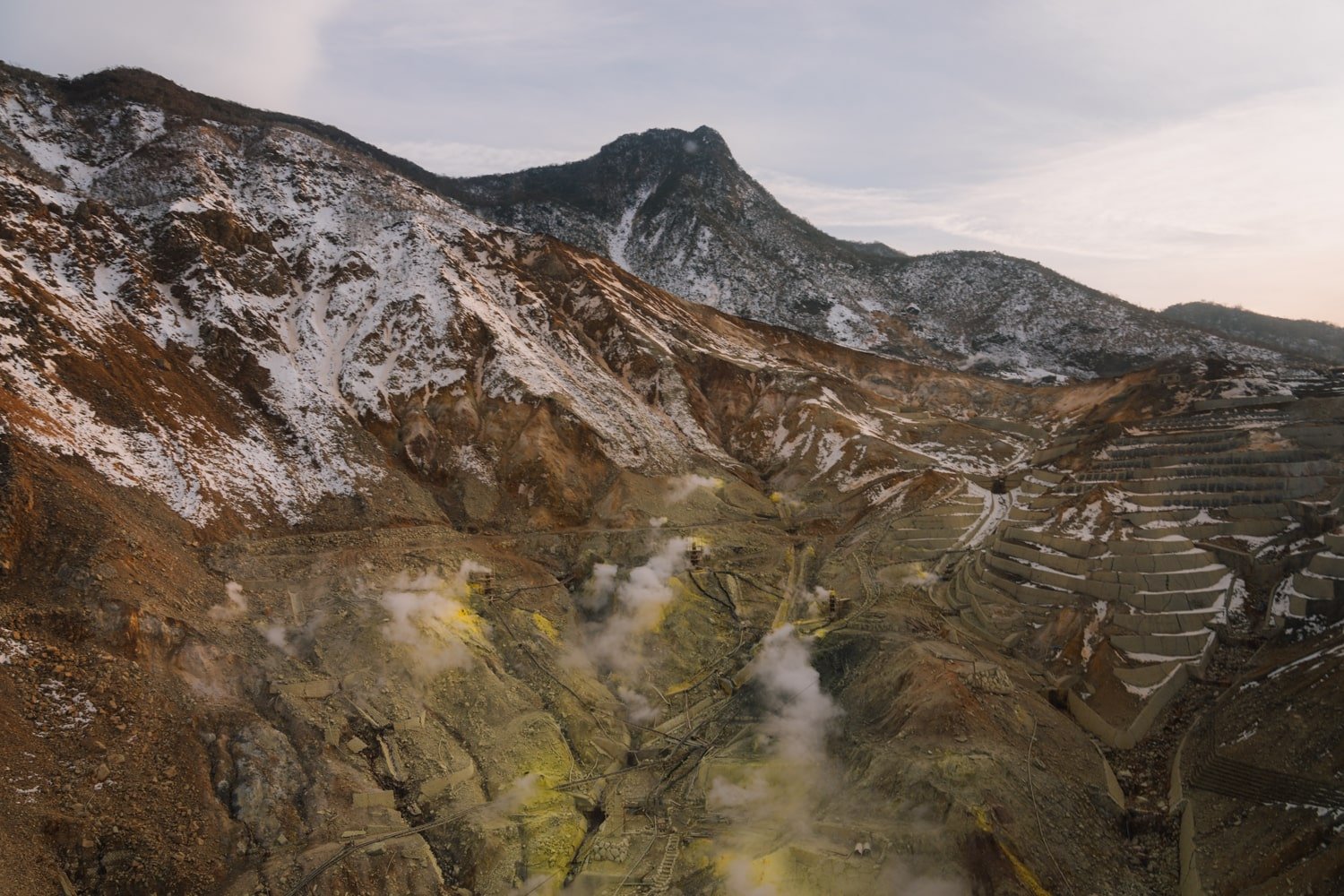
Riding the Hakone Ropeway is one of the modes of transport included in your Hakone Freepass, and it doubles as one of the top things to do in Hakone… for reasons you’ll understand when you go!
The ropeway ride is essentially an aerial tram that transports you from Togendai to Owakudani (to Sounzan), where you can see sulfur vents from volcanic activity.
The smell outside is a bit repugnant but not too overpowering!
From Owakudani station, you can see Mount Fuji on a clear day. You will also get to experience riding over the volcanic sulfur fields.
This area is nicknamed Hakone’s Hell Valley because of its volcanic activity—as you glide over it, you see why!
⚠️ Note: The Hakone Ropeway sometimes closes for maintenance and/or due to poor weather. It was closed for two days during my three days in Hakone, so I was glad I did it when the weather was nice on my first day. If this is the case, there will be an alternate bus option to continue the sightseeing loop.
11. Eat Hakone’s Famous Black Egg in Owakudani
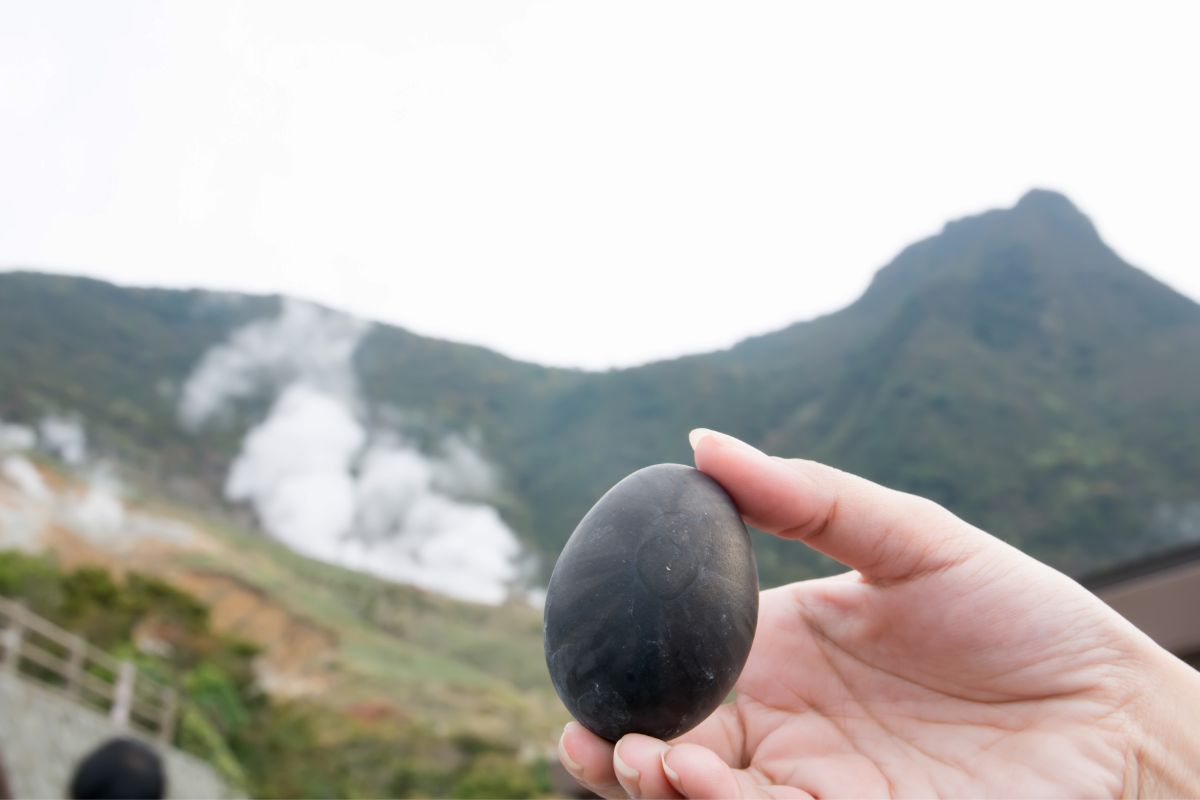
While in Owakudani, you can visit the tourist shop to buy and try the famous Hakone black egg, which is said to give you seven years of good luck!
The black egg of Hakone is just a normal egg cooked for one hour in the sulfur hot springs.
The eggshell turns black, but the egg tastes, well, like a normal egg! 🥚
You can only purchase a package of four eggs for ¥500 (not single eggs). Does eating all four quadruple your seven years of good luck?!
12. See Mount Fuji From the “Pirate” Cruise Across Lake Ashi

The Lake Ashi cruise is one of Hakone’s most popular and unmissable activities.
If not for the views of Mount Fuji, then for the sheer necessity of getting across the lake to reach Togendai to take the Hakone Ropeway to Owakudani!
Luckily, the fare for crossing Lake Ashinoko is included in the Hakone Freepass.
Also Read: Is the Hakone Freepass Worth It?
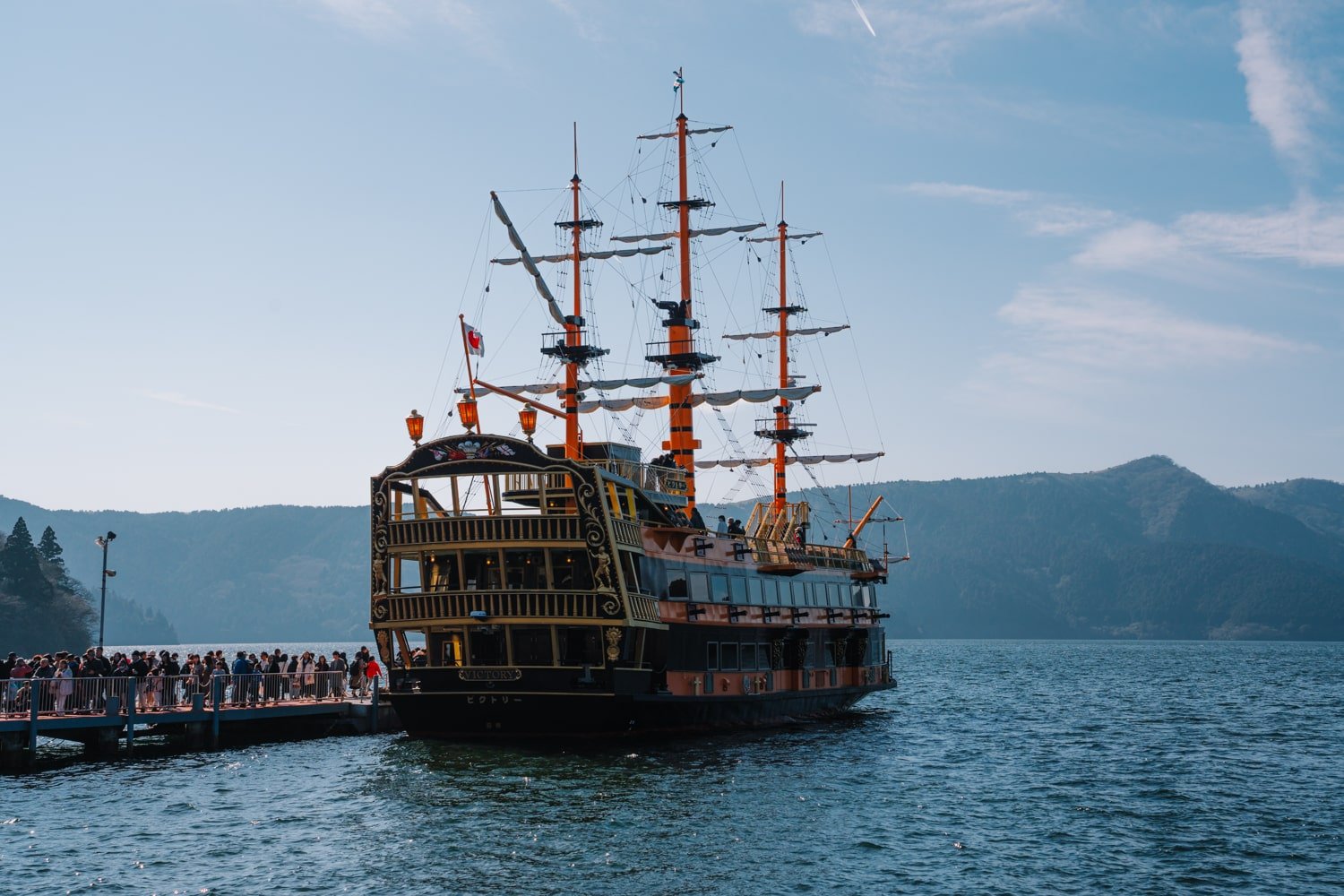
You can cross to Togendai from Motohakone-ko (recommended route) or use the free pass for unlimited return trips.
That means even if you started the Hakone “loop” counter-clockwise, you could cross from Togendai–Motohakone.
Either way, the boat provides a unique opportunity to capture Mount Fuji towering behind the Hakone shrine’s vermillion Torii gate that rises out of the water.
13. Enjoy the Beautiful Floral Garden at Gora Park
Gora Park is so pretty that some may say it’s crucial to see, whether rain or shine, while in Hakone.
And I agree!
Gora Park is a manicured French-style garden that seems to always be in bloom. But that may be because it is!
Gora Park has all types of bushes, trees, and flowers year-round, from cherry blossoms to azaleas to autumn foliage. During the winter in Hakone, the park remains open and can be rediscovered under snow and in the air by the magic of Christmas.
It will depend on the weather if you choose between Gora Park (at the end of the Tozan line) and another attraction, such as a museum.
But even if it’s a dreary day, the park offers glass-blowing/crafts workshops, plus a tea room and restaurant.
14. Drink a Local Hakone Beer at the Gora Brewery
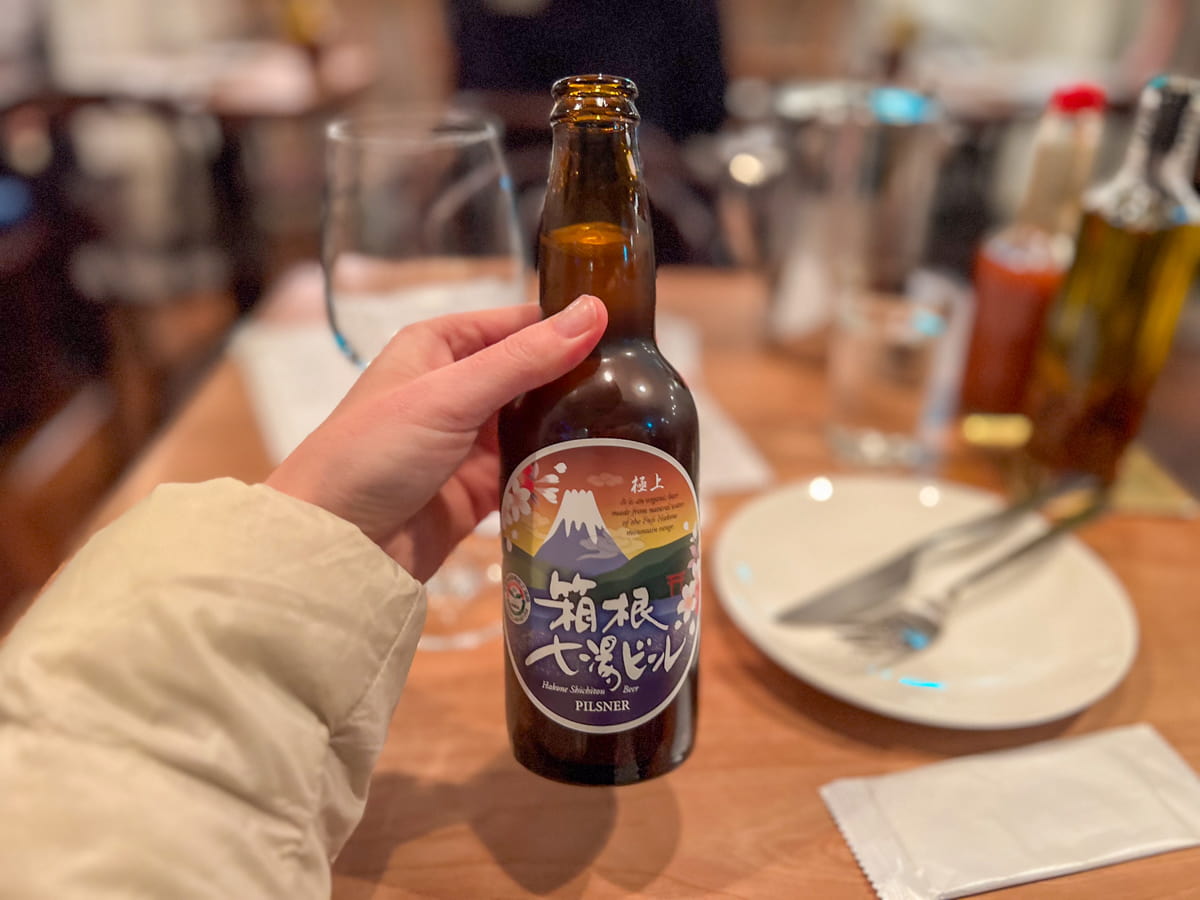
Ahh, one of the things to do in Hakone (which I missed out on due to opening hours) was grab a pint at the Gora Brewpub. But grabbing a glass in Hakone is necessary if you enjoy a beer!
Even though I didn’t get to visit this brewery, I did drink a local Hakone craft beer while in town!
By chance, I stopped for dinner at this super cozy Italian/pizza restaurant called 808 Monsmare, where the craft beer available was brewed with fresh Hakone mountain water.
15. Cozy Up at a Coffee Shop
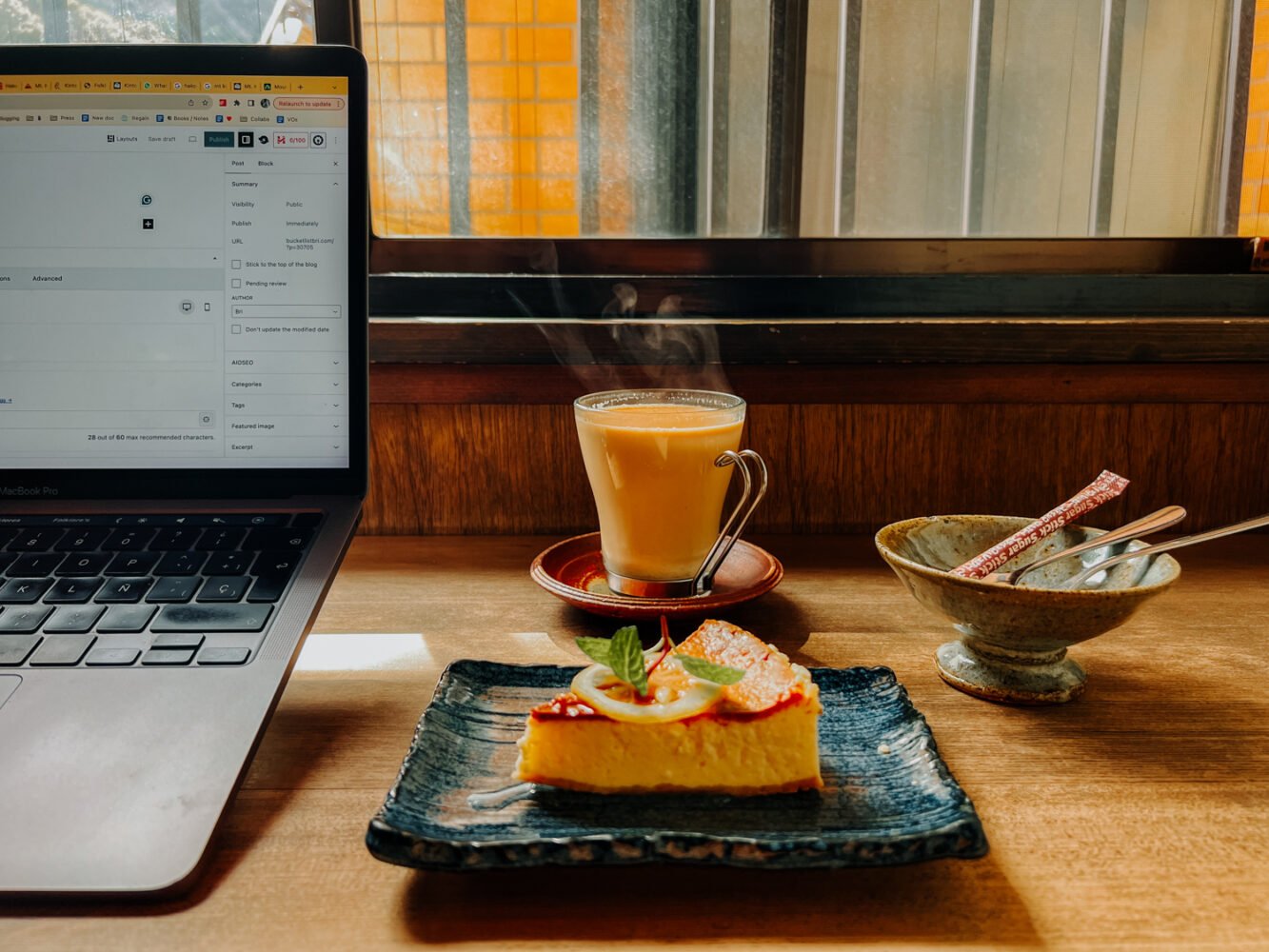
When the weather outside is too frightful, my go-to is to duck inside a cozy coffee shop and spend time reading, writing, or journaling.
There are few cafes in the Hakone area where you can lounge for a while, but I found Café Timuny in Hakone-Yumoto to be one of the best (or at least, exactly what I needed!).
With delicious cheesecake and coffee and comfy sofa chairs, this is the ideal coffee shop to enjoy the gray rainy-day atmosphere of Hakone.
16. Take in the Views on Japan’s Longest Suspension Bridge (Mishima Skywalk)
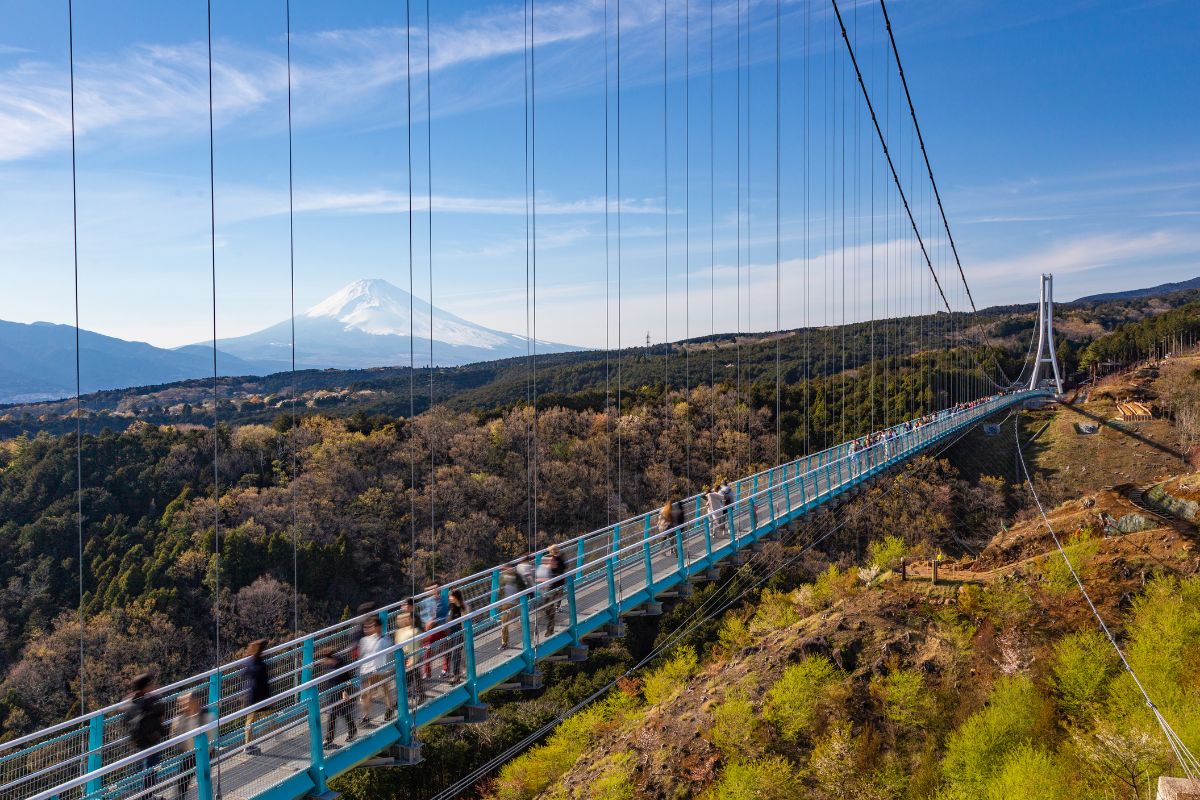
End your time in Hakone with a bang by heading to the Mishima Skywalk (also known as Hakone Seiroku Mishima Suspension Bridge)—Japan’s longest suspension bridge!
Of course, why include this in your Hakone itinerary?
For the views of Mount Fuji, of course!
While simply crossing the bridge (or walking on it) might be already too much of an adrenaline-charged activity for some, there’s also a zip line called “Forest Adventure” for those seeking an extra thrill.
You’ll also find a restaurant and gift shop at the skywalk for last-minute souvenirs.
You can get to this park by taking the bus past Motohakone-ko.
All in all, I think there is much more to Hakone than meets the eye, and even though I felt rushed to see and do it all, I believe Hakone is better experienced slowly.
I hope you have a wonderful time in Hakone! If you come across even more fun outdoor activities and things to do, suggest them in the comments! I’ll save them for a second trip (this summer!!).
<!–
–>
